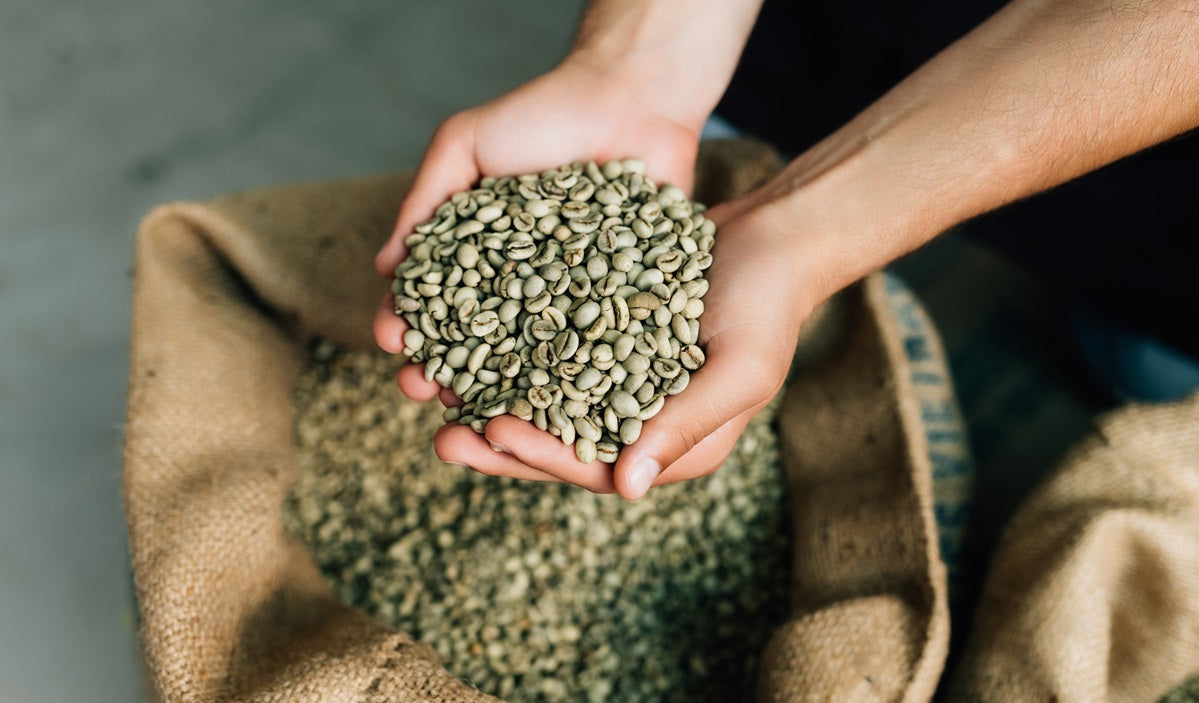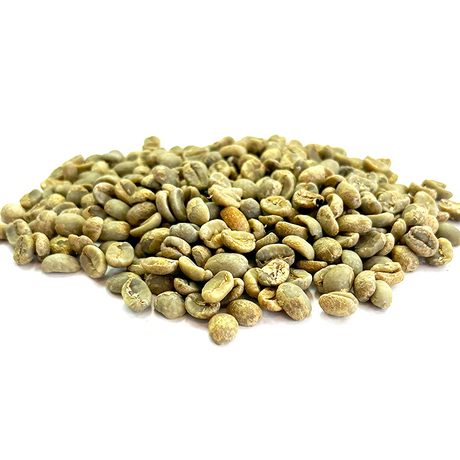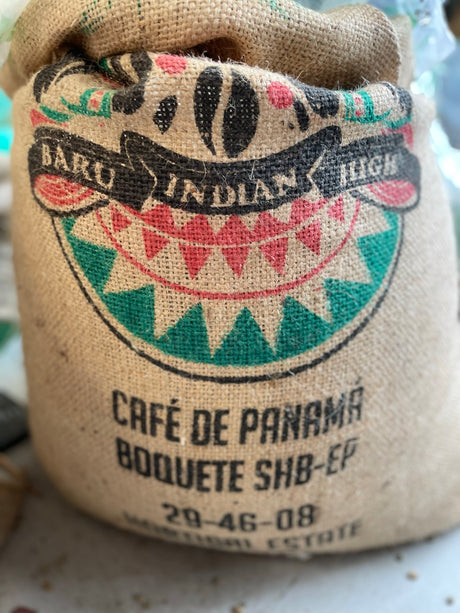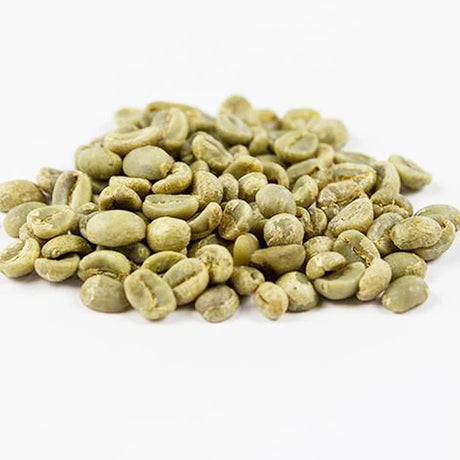Redber
PANAMA BOQUETE FINCA HORTIGAL - Green Coffee Beans
Brown sugar | Citrus | Milk chocolateFrom £6.75Unit price /UnavailableRedber
KENYA KERICHO LOT 20 Washed - Green Coffee Beans
Chocolate | Citrus fruits | FloralFrom £5.50Unit price /Unavailable
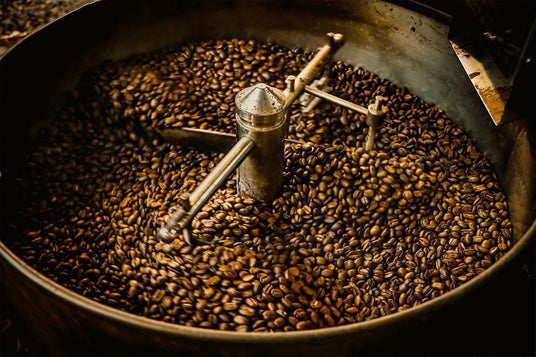
How to Roast Green Coffee Beans at Home – A Step-by-Step Guide.
- Gather Your Equipment: Begin by preparing all necessary equipment for roasting your green coffee beans. Ensure everything is clean and ready for use to achieve the best flavours in your roast. Measure out your desired amount of raw coffee beans, remembering that they will lose some weight during the roasting process.
- Preheat the Roaster: Preheat your coffee roaster to the recommended temperature, as specified by the manufacturer. This will vary depending on your desired roast level, whether you’re aiming for a light, medium, or dark roast for your unroasted coffee beans.
- Load the Green Coffee Beans: Carefully add the green coffee beans into the roaster, making sure not to overload. The beans need room to move and expand during the roasting process, allowing for even roasting and enhanced flavour profiles.
- Monitor the Roast: As the beans roast, observe the colour changes and listen for the cracking sounds. The “first crack” signals a medium roast, while the “second crack” indicates a darker roast. Monitoring these stages will help you control the roast level and unlock the best flavours in your unroasted coffee beans.
- Cool the Beans: Once your green coffee beans have reached the desired roast level, transfer them to a cooling tray or colander. Agitate the beans to cool them quickly, preserving their aromas and preventing over-roasting.
- Rest and Degas: After cooling, allow the roasted beans to rest for at least 24 hours. During this time, they will release carbon dioxide, enhancing flavour. Store them in a container with a one-way valve to allow the gas to escape while maintaining freshness.
- Grind and Brew: When you're ready to enjoy your fresh roast, grind the beans to your preferred size and brew using your favourite method. Experiment with different brewing techniques to get the most out of your freshly roasted green coffee beans.
Check out our guide on home coffee roasting.
Frequently Asked Questions
What are the different types of green coffee bean varieties?
What are the different types of green coffee bean varieties?
Green coffee beans come in two main species: Arabica (Coffea arabica) and Robusta (Coffea canephora). Each species has distinct growing conditions, flavour profiles, and caffeine content. Here’s a closer look:
Arabica Coffee Varieties
Arabica, known for its complex flavours and balanced acidity, makes up 60-70% of global coffee production. It is typically grown at high altitudes (1,200-2,200m), which enhances its unique flavour profiles. Popular Arabica varieties include:
- Typica: Known for a clean, sweet taste with notes of fruit, florals, and chocolate.
- Bourbon: Prized for its sweet, full-bodied flavour with notes of caramel, nuts, and red fruit.
- SL28 and SL34: Originating from Kenya, these beans offer bright acidity and fruity notes, such as blackcurrant.
- Gesha (Geisha): Renowned for its floral aroma, tea-like body, and hints of bergamot and tropical fruit.
- Caturra, Catuai, and Pacamara: Hybrid varieties developed for resilience while maintaining Arabica’s complex flavours.
Robusta Coffee Varieties
Robusta has a stronger, more bitter flavour with earthy, woody notes and higher caffeine content (2.2-2.7%). It’s typically grown at lower altitudes (200-800m) and is known for:
- Higher Caffeine Content: Contributes to a bold, bitter taste, often used in espresso blends.
- Flavour Profile: Strong, earthy flavours with a thicker crema, making it popular in espresso and instant coffee.
Other Notable Varieties:
- Liberica: With fruity, floral, or smoky notes, Liberica beans have a unique, bold profile and are primarily grown in Southeast Asia.
- Excelsa: A variant of Liberica, known for its tart and fruity notes, adding depth to coffee blends.
What equipment do I need to start roasting coffee at home?
What equipment do I need to start roasting coffee at home?
Basic home roasting equipment includes a stovetop popcorn popper, baking sheet with an oven, or a dedicated home coffee roaster. You’ll also need a kitchen scale, thermometer, and a fan or colander to cool your freshly roasted green coffee beans.
What is first crack and second crack in coffee roasting?
What is first crack and second crack in coffee roasting?
The first crack is an audible popping sound, signalling that the beans are reaching a light to medium roast. The second crack is softer, indicating a medium-dark to dark roast. Listening for these cracks helps determine your roast level.
How do I cool my beans after roasting?
How do I cool my beans after roasting?
To cool beans quickly, spread them on a metal colander or tray and use a fan to blow air over them. This stops the roasting process, preserving the desired flavour profile in your unroasted coffee beans.
What is roast development time, and why is it important?
What is roast development time, and why is it important?
Roast development time is the period after the first crack until the roast is complete. This time impacts flavour: a shorter development time can create a sour taste, while longer times may result in a bitter or smoky flavour.
How do I adjust my roast profile for different bean densities?
How do I adjust my roast profile for different bean densities?
Higher-density beans (often from high altitudes) require more heat to develop flavours, while lower-density beans need a gentler roast. Adjust heat and airflow accordingly for even roasting based on bean density.
What role does airflow play in coffee roasting?
What role does airflow play in coffee roasting?
Airflow controls temperature and removes chaff (the bean’s outer skin). Proper airflow prevents smoky flavours and allows for better control over the roasting process.
Can green coffee beans absorb odours?
Can green coffee beans absorb odours?
Yes, green coffee beans can absorb odours from their environment. Store them in airtight containers, away from strong-smelling items, to preserve their natural flavours.
What causes scorching during the roasting process?
What causes scorching during the roasting process?
Scorching is typically caused by high initial temperatures, especially when the beans first enter the roaster (known as "charging"), combined with inadequate agitation. If the drum or roasting environment is too hot, or if beans sit too long in one spot, they can burn on the surface before the inside is properly roasted.
Why is my roasted coffee smoky or ashy?
Why is my roasted coffee smoky or ashy?
A smoky or ashy flavour often results from not enough airflow during roasting or failing to remove chaff properly. Make sure to ventilate your roasting area and stir beans well to avoid these flavours.
How can I improve the consistency of my roast?
How can I improve the consistency of my roast?
Use the same batch size, set a consistent preheat temperature, and keep detailed notes on time, temperature, and airflow. Also, make sure to agitate the beans evenly to prevent scorching or under-roasting.
Why are some beans chipping or breaking during roasting?
Why are some beans chipping or breaking during roasting?
Beans can chip or break due to extreme temperature changes, over-agitation, or using old, low-quality beans. Ensure a gradual temperature increase and consistent agitation to prevent this issue.
What is the best way to clean my roasting equipment?
What is the best way to clean my roasting equipment?
Clean your roaster regularly by removing chaff, wiping down surfaces, and using a vacuum or brush to clear out any remaining debris. This prevents the build-up of oils and burnt material, which can impact future roasts.
How do I know if my green coffee beans have gone stale?
How do I know if my green coffee beans have gone stale?
Stale green coffee beans may appear faded or dull and may have a musty smell. They also lose their characteristic "crunch." Roasting stale beans results in flat, lacklustre flavours.
How should I store green coffee beans at home?
How should I store green coffee beans at home?
Green coffee beans should be stored in a cool, dark place, ideally in an airtight container, to preserve their freshness and flavour. Avoid direct sunlight, humidity, and exposure to strong odours, as they can absorb smells from their environment.
What is the shelf life of unroasted coffee beans?
What is the shelf life of unroasted coffee beans?
Unroasted coffee beans, when stored properly, can maintain their quality for up to a year or more. However, for the best flavour, it’s recommended to use green coffee beans within 6-12 months of purchase.
How do roast levels affect the caffeine content?
How do roast levels affect the caffeine content?
Lighter roasts tend to retain more caffeine than darker roasts. However, the difference is minimal. The biggest impact on caffeine content in your coffee is the type of green coffee bean (Arabica vs. Robusta) rather than the roast level.
Can I blend different types of green coffee beans before roasting?
Can I blend different types of green coffee beans before roasting?
Yes, blending green coffee beans before roasting allows you to create custom flavours. However, since different beans may roast at different rates, you might need to experiment to find the best balance for each blend.
How do I achieve a consistent roast each time?
How do I achieve a consistent roast each time?
Consistency in roasting comes with practice. Track your roasting times, temperatures, and airflow settings. Roasting similar batch sizes and using consistent equipment also helps in achieving uniform results.
Coffee Bean Origins and Flavour Profiles
Each region where coffee is grown has its unique climate, soil, and altitude, which significantly influence the flavour profile of the coffee beans. Here’s a quick guide to the distinctive flavours associated with the coffee-growing regions:
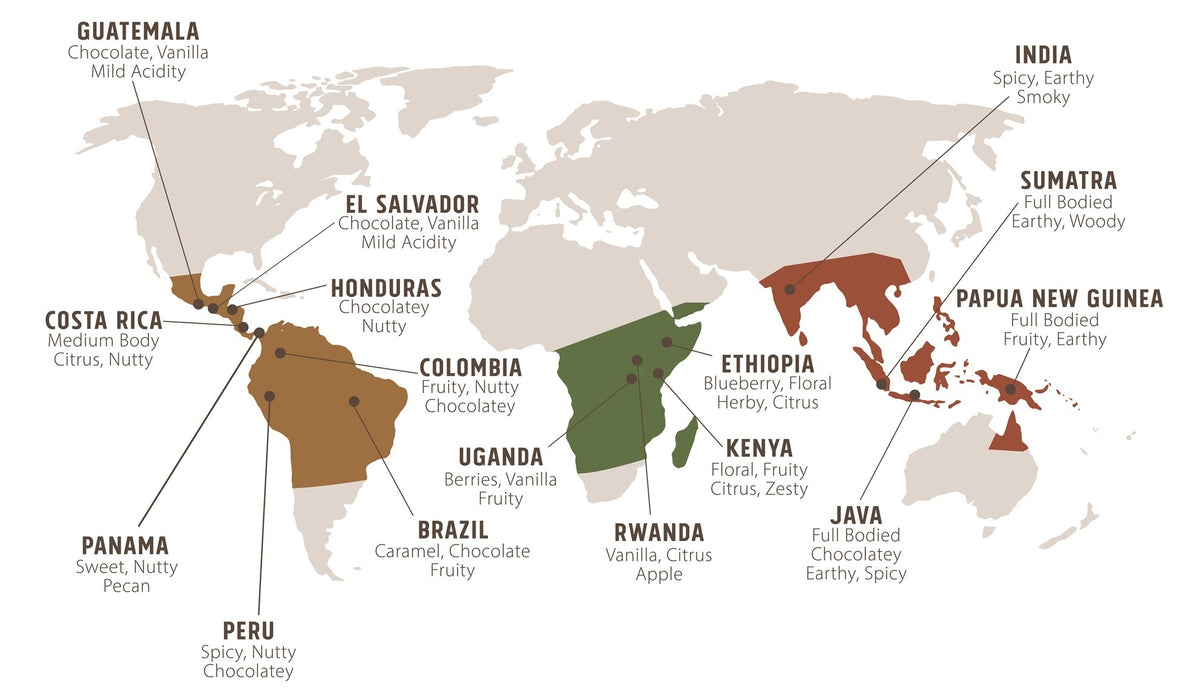
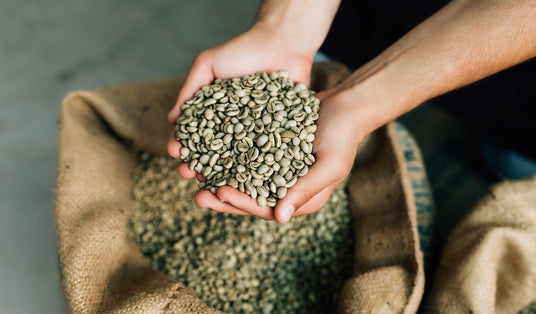
Stages of the Roasting Process
The coffee roasting process is a fascinating journey of chemical reactions that unlocks the complex flavours and aromas within each green coffee bean. Roasting can be broken down into three main stages: Drying, Browning, and Development.
- Drying Stage – In this initial phase, the moisture within the green coffee beans evaporates, causing the beans to expand in size and become more brittle. Proper drying sets the foundation for even roasting.
- Browning Stage – As the beans continue to roast, they enter the browning stage, where chemical reactions form caramelized sugars and release aromatic compounds. This stage is essential for developing the flavours unique to each unroasted coffee bean.
- Development Stage – Finally, during the development stage, the beans darken further, and complex flavours emerge as heat is applied. This is where the beans’ true character is formed, producing a range of flavour profiles from bright acidity to deep richness.
The duration and intensity of each stage will vary based on the desired roast level. Light roasts are roasted for a shorter time, resulting in a brighter, more acidic cup, while dark roasts require a longer roast for a bolder, more intense flavour. Understanding these stages and how they affect taste is key to mastering home coffee roasting.
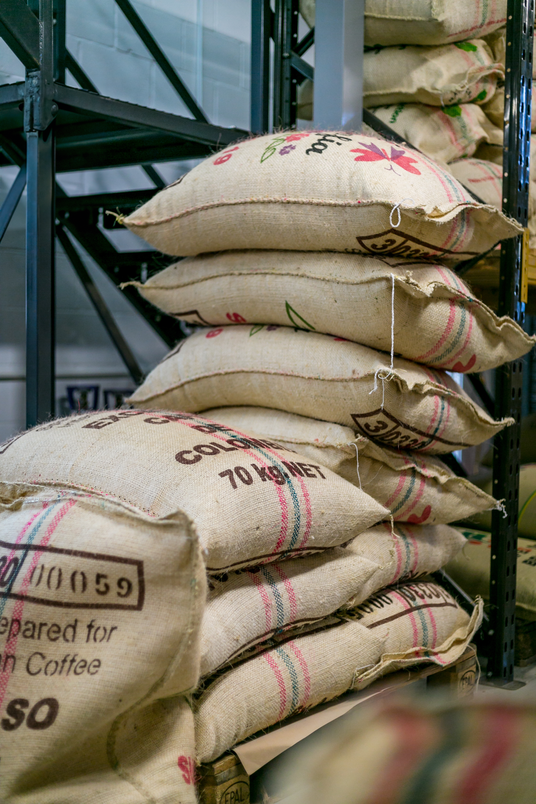
Flavour Profiles of Coffee Processing Methods
Washed (Wet) Process: Clean, bright, and crisp with pronounced acidity. Flavour notes are often floral, fruity, or citrusy, resulting in a clear and well-defined cup.
Natural (Dry) Process: Fruity, sweet, and complex with a heavier body and lower acidity. Common flavour notes include berries, wine, and tropical fruits, with a sometimes fermented quality.
Honey (Pulped Natural) Process: Balanced sweetness with fruity undertones and a medium to full body. This method combines the clarity of washed coffees with the fruitiness of naturals, often resulting in caramel, honey, or stone fruit notes.
Wet-Hulled (Giling Basah) Process: Earthy, herbal, and spicy with a full body and low acidity. Flavours can include tobacco, woody, and mossy notes, creating a deep and robust cup.
Monsooned Process: Earthy, musty, and smooth with a very low acidity. Common notes are nutty, spicy, and woody, giving a unique aged or "cigar-like" flavour profile.
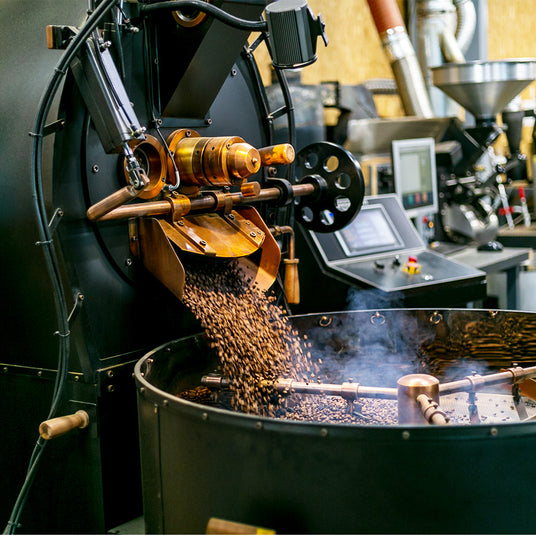
Tips for achieving the perfect roast
- Start Small: Begin with small batches to better control variables and learn from each roast. Increase batch size as you gain experience.
- Keep Records: Document roast profiles, including time, temperature, and observations. This helps with consistency and future improvements.
- Experiment with Beans and Blends: Try different beans, origins, and roast levels to create unique blends that suit your taste.
- Watch Colour and Aroma: Use visual cues and aromas to gauge roast levels and flavour development. Trust your senses during roasting.
- Practice Patience: Allow roasted beans to rest for at least 24 hours to let flavours develop, resulting in a more balanced cup.
- Enjoy the Process: Coffee roasting is about learning and experimenting. Take risks, try new things, and refine your skills over time.
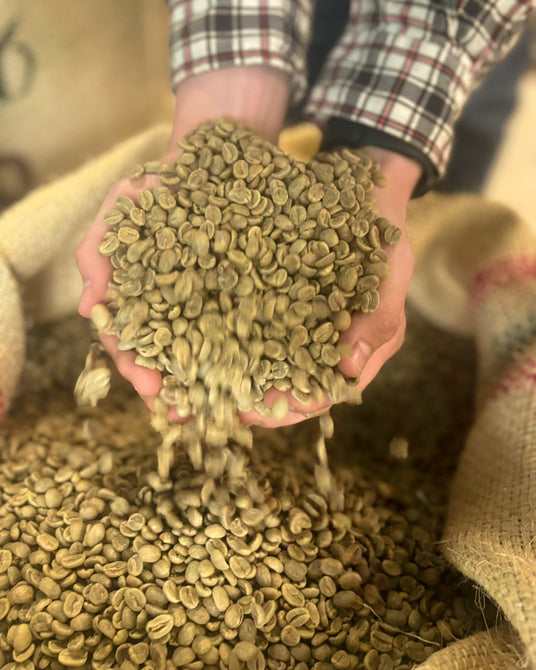
Why Roast Green Coffee Beans at Home?
Roasting green coffee beans at home offers a range of benefits beyond just great taste. Home coffee roasting gives you complete control over the entire process, allowing you to choose high-quality raw coffee beans, experiment with different roast levels, and customise each cup to match your unique preferences.
By roasting at home, you can enjoy the freshest coffee possible; freshly roasted unroasted coffee beans retain far more flavour and aroma compared to pre-packaged options that may have been on shelves for weeks.
In addition to unmatched freshness, home roasting can be an enjoyable and rewarding hobby. It provides the chance to learn about coffee origins, experiment with various unroasted coffee beans for home roasting, and create one-of-a-kind blends tailored specifically to your taste.

